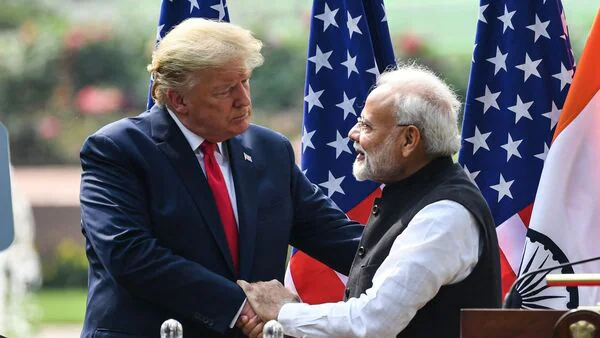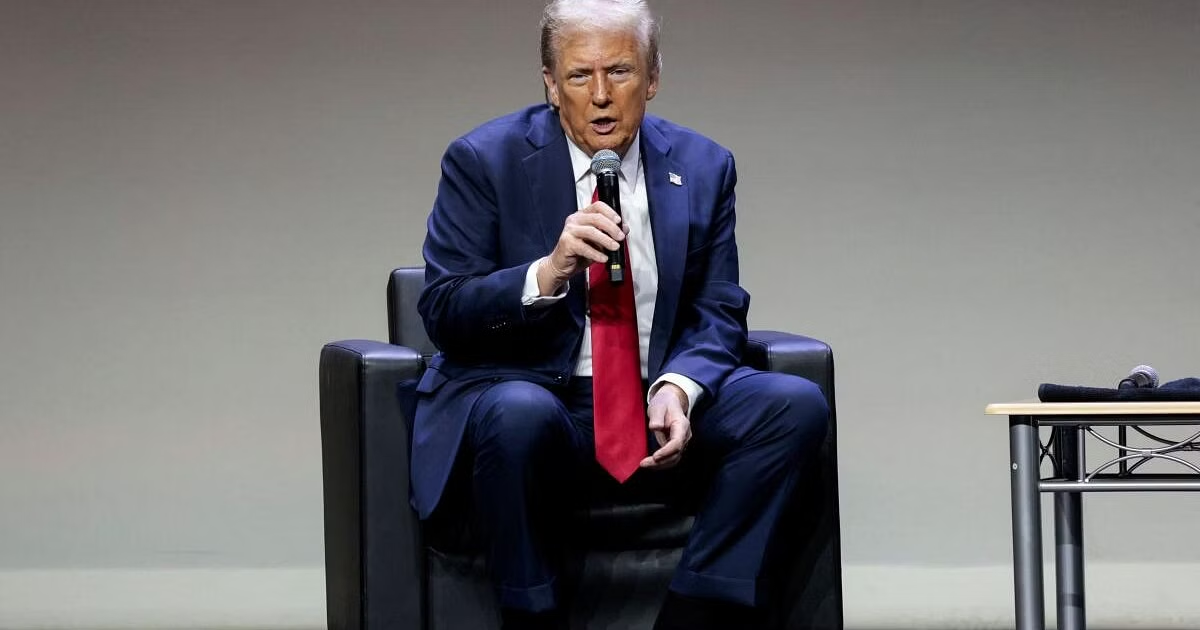Key Highlights:
Yet again, the trade policies of India were targeted by former US President Donald Trump by criticizing the high tariffs of the country imposed on foreign products. Speaking at a campaign event, Trump had accused India of imposing some of the world’s highest tariffs on American goods. If he were re-elected in the 2024 presidential race, Trump promised reciprocal action. His words have caused furor and taken many discussions on US-India trade relations and the potential effects on each economy.
The History of Trade Tensions: Trump’s Accusations
The latest remarks by Donald Trump are not the first time he has spoken against India’s trade practices. During his first term as President, Trump repeatedly talked about India’s tariffs, especially on goods such as motorcycles, agriculture products, and imports of technology. The government under Trump was trying to renegotiate trade terms with India, demanding relatively lower tariffs and easier access to markets for American products.

During his latest address, Trump said that India charges with a smile. What it basically means is that even though Indian leaders may flash reassuring smiles during diplomatic talks, they certainly are not willing to give in when it comes to trade. He referred to tariffs as the main problem; he framed those as the central reason for the imbalances in trade between the two countries. “They do it with a smile,” Trump said, criticizing India’s approach while promising to introduce reciprocal measures if he returns to power in 2025.
Understanding India’s Tariff Policy: High but Strategic
India had been notorious for maintaining high tariffs on certain items imported from other countries under its economic policy. The primary reason for imposing such tariffs was to safeguard the local industries and work towards greater self-reliance in all endeavors, in line with programs like “Make in India.” Indian tariffs on automobiles, agricultural products, and consumer electronics, among other things, have also been the epicenter of controversy in trading terms with the United States numerous times.

For instance, the Indian tariff on imported motorcycles—the topic of one of Trump’s biggest complaints during his first term in office—has been one of the big sticking points. For dairy and electronics and some other kinds of products, tariffs have been somewhat high, which the Indians argue are necessary to protect domestic industries so as not to be reliant on imports. Some of these measures have run counter to the interests of certain domestic producers while creating friction with international trade partners.
Trump’s Promise of Retaliation: What Could It Mean?
A promise from Trump of reciprocal action if re-elected may spell the end to being treated like a doormat by India and sour grapes for both the US and the Indian economies. During his previous term, President Trump’s administration announced tariffs on imports of Indian steel and aluminum, which entailed retaliatory tariff measures on Indian products imported from the US, including the nuts like almonds, walnuts, and apples. The trade spat between the two democracies pointed out how sensitive the trade relationship was.
If he indeed follows through on his commitments in 2024, that would only be renewed pressure on India to lower its tariffs or face higher duties on exports coming into the US from India. That would impact industries such as textiles, pharma, and IT services because those are core export industries of India in the American market. Both India and the US have voiced caution over rising trade tensions. Companies on either side are concerned that this may disrupt supply chains and access to markets.
Reaction to Trump’s Statements: Mixed Reactions in India
Trump’s remarks have created mixed reactions in India. Although some political analysts went as far as to state that these remarks fall within the larger “America First” rhetoric where he sought to appease his voters, others are quietly waiting for Indian officials to get an official response from the White House. According to most trade experts, India is likely to continue underlining the need for achieving a balanced approach towards tariffs for the protection of sensitive parts of its economy.
A large majority of the bigger sections of the Indian business community, however, is concerned about the fallouts that might result from the deadlock. Some are worried that all-time protectionist protection of Indian industries may continue into the foreseeable future; others are concerned that conflict over issues of trade would increasingly come in the way of growth opportunities in the US, which is among India’s largest export destination.
US-India Trade Relations: The Story of Complexity
The US and India have always had complicated trade relations, where cooperation and disagreement often reign. The two countries have engaged in multiple strategic and economic dialogues on issues concerning imbalances in trade and enhanced market access, despite issues pertaining to tariffs. The US is one of India’s largest trading partners, with bilateral trade reaching almost $150 billion in recent years.
The efforts made during the Biden administration seem to stabilize the trade relations and the discussion seems centered on the least barriers and investment opportunities. This may change the tone of the discussion in the case of the return of Trump to the presidency. Issues like tariffs, market access, and intellectual property rights may have a lot more confrontation.
Conclusion: What is Expected from US-India Trade?
As Donald Trump has begun campaigning for the 2024 elections, the criticism of India’s trade policies has become an oft-repeated buzzword around that, reflecting his greater agenda of trying to level out what he perceives as trade imbalances. As appealing as his stance sounds to parts of his voter base, it remains equally important to question the trajectory of US-India economic relations in the future.
For India, this presents a conundrum: how to balance strategic tariffs to preserve domestic industries yet not jeopardize trade relations with the US. Businesses on both sides will wait with bated breath as these ripples hit shores in the coming months.
Finally, the 2024 US elections could write the last chapter on US-India trade relations, ushering in one of two possibilities: further entrenchment of ties between the two in the belief that more cooperation is good for business or a new era of re-emerging disputes. As both sides appear to prepare for such an eventuality, the stakes are high for one of the world’s most consequential trade relationships.
For Latest News Updates Click Here
